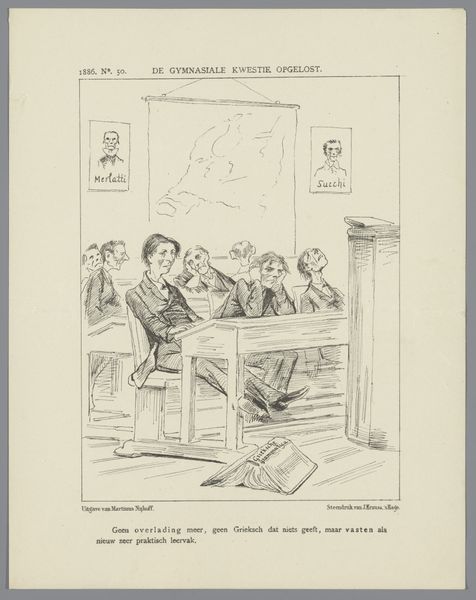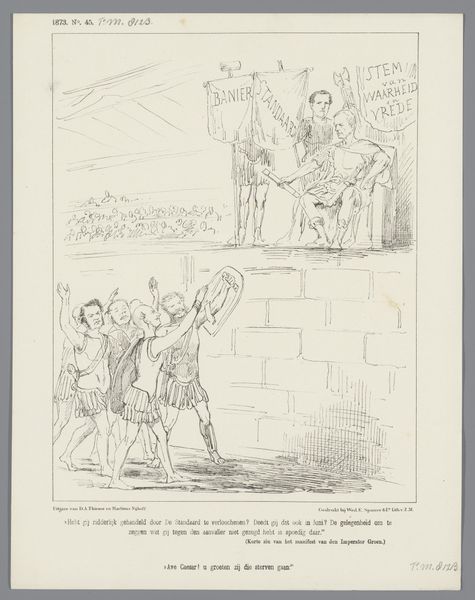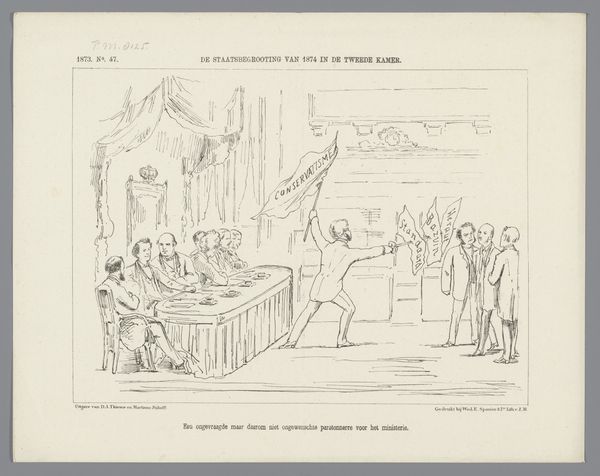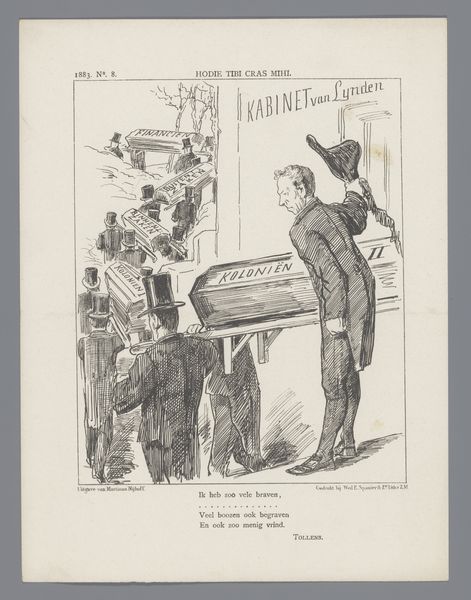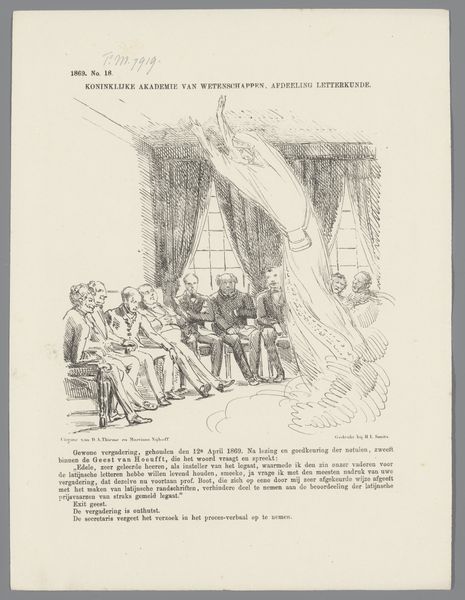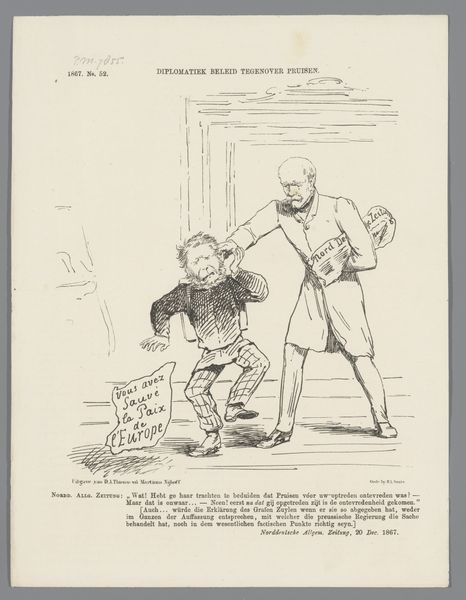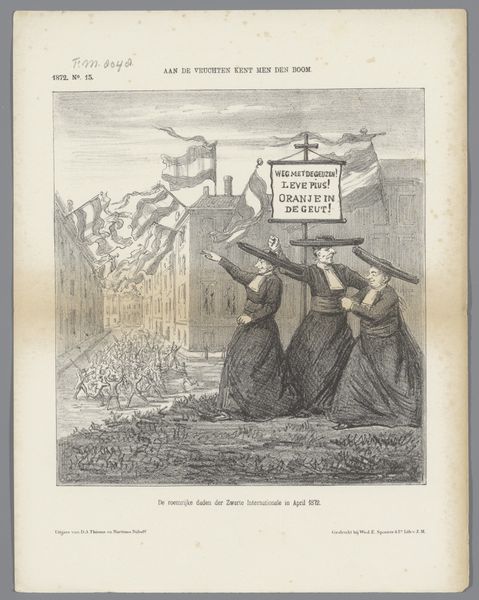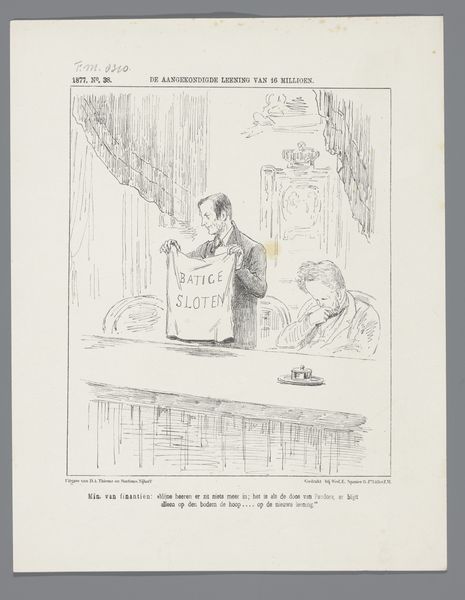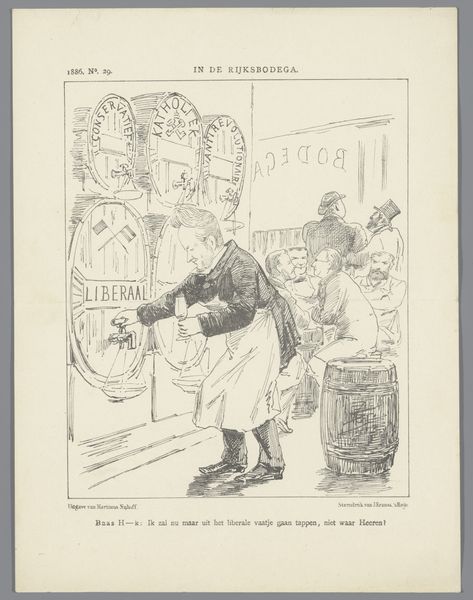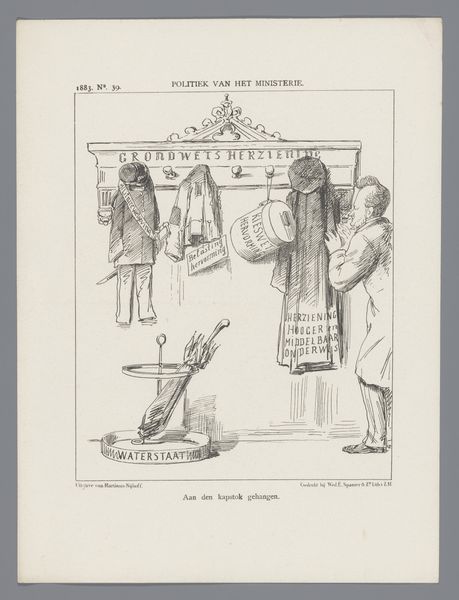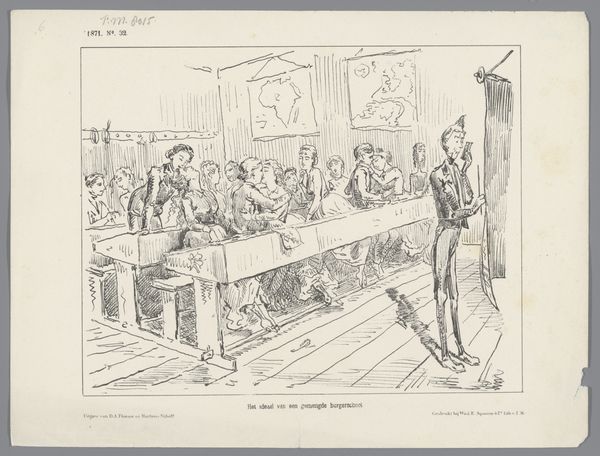
drawing, print, engraving
#
portrait
#
drawing
#
comic strip sketch
#
statue
# print
#
caricature
#
line
#
history-painting
#
academic-art
#
engraving
Dimensions: height 405 mm, width 300 mm
Copyright: Rijks Museum: Open Domain
Editor: This is a drawing called "Aandenken aan de onthulling van het standbeeld van Rembrandt, 27 mei 1852" created by J.L. Lacoste in 1852. It’s an engraving depicting the unveiling of Rembrandt's statue. There is almost a sense of chaos or satirical mockery in this image... What layers do you perceive beneath the surface of this work? Curator: That sense of chaos, I think, speaks volumes. We have to consider the historical moment: 1852. What did Rembrandt represent in the Netherlands at that time? Was he simply a celebrated artist, or did he also symbolize something about Dutch identity, about class, and power? Notice the crowd – how are they depicted? Are they a homogeneous group, or is there a sense of social stratification being represented? Editor: I see a range of people in the crowd, but can't tell what class each person may represent. So are you saying this work might critique the elite’s appropriation of a national icon like Rembrandt? Curator: Precisely. This isn't simply a commemoration. The drawing style borders on caricature. The angel presenting the portrait feels staged, almost performative. It invites us to consider who benefits from these acts of memorialization, and who is potentially excluded or misrepresented. Are we celebrating Rembrandt, or are we celebrating the elite who control his image? Editor: That makes me wonder, also, about the artist, Lacoste. Was he part of that elite? Curator: That's an essential question! His positionality matters. To truly understand this print, we'd need to delve into his biography, his social circles, his potential motivations for creating such a piece. Is he an insider offering a subtle critique, or an outsider looking in with skepticism? The inclusion of text further encourages speculation. Editor: Wow, I'm never going to look at public statues the same way again. Thank you. Curator: Indeed! It demonstrates that art isn’t made or viewed in a vacuum; it is shaped and filtered through various points of view.
Comments
No comments
Be the first to comment and join the conversation on the ultimate creative platform.
